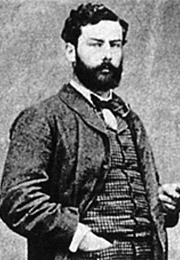Sisley was an Impressionist painter whose primary focus was landscape. His bucolic scenes embody many of the quintessential features associated with Impressionist landscapes: broken brushwork and a fresh, bright palette that captures the changing effects of light and atmosphere. Although he was born in Paris and spent most of his life in France, Sisley was a British national, and his two attempts to gain French citizenship failed. When he was a young man, his parents sent him to London to train in business for several years; he might have developed his interest in art there. His first known artistic training began in 1862, when he joined the studio of Charles Gleyre, where future Impressionist painters Pierre-Auguste Renoir, Claude Monet, and Frédéric Bazille also worked. Sisley soon joined these and other artists in painting in the open air of the Fontainebleau forest, gradually developing his distinctive style through the direct observation of nature. By 1870, Sisley’s work had been accepted to the official Salon several times; he subsequently joined his friends in five Impressionist Exhibitions in the 1870s and early 1880s.
Sisley’s output was prolific in the last several decades of his life, in part because of the financial troubles he suffered after his family business failed in the 1870s. While he worked for a time in Paris, Sisley spent much of his career painting in villages along the Loing and Seine rivers, often featuring the rivers and their tributaries as elements in his compositions. He frequently explored variations on similar scenes, with nuanced changes in color and composition. While continuing to emphasize harmonious effects of color and light, Sisley’s brushwork often became more vigorous in his later works.



